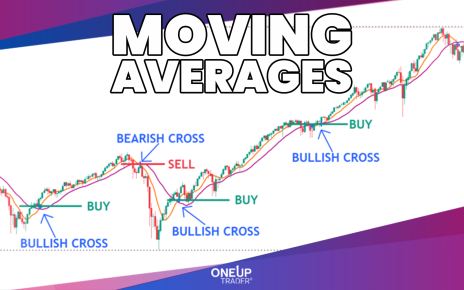Investors of all sorts, from corporations, hedge funds, mutual funds, proprietary trading firms individuals, invest in and trade with public companies shares. If you want to follow their example, you shouldn’t jump blindly into this century-old game.
To build a solid investment strategy, you need to know what types of stocks exist. There are well over ten types of stocks you can invest in.
What are the differences between growth stocks, penny stocks, and blue-chip stocks, for instance? In this article, you’ll be able to improve your knowledge of stocks. However, before we give your different types of stocks, let’s make a quick stop to define what stocks are.
Brief definition of stocks

When a corporation decides to go public, you can buy a fraction of it. Simply put, a stock is a fraction of the company that’s available on the stock market. You can also look at it as a security that represents your ownership of a fraction of a company.
Stock and shares are not the same things. Shares are, in fact, units of stock. Stock is often called equity – to be more specific, and equity stands for the value of the shares issued by a company.
The stock also determines how much profits and assets of a company the stock owner is entitled to. As an investment vehicle, stocks are very popular. Given that their market performance is somewhat difficult to anticipate, they are an engaging investment opportunity as well. Finally, you can buy and sell stocks on a stock market or stock exchange.
The term “stock market” also refers to the benchmark stock market indexes, such as the Dow Jones or the S&P 500. These indexes include a section of the stock market and their performance is viewed as representative of the entire market.
Now that you understand what stocks are, let’s take a look at different types of stocks and stock categories.
Learn what assets you can trade in a funded trading account!
Types of stocks
There are many different types of stocks. However, you should first get familiar with two common stock types – common stocks and preferred stocks.
Common stocks
Common stocks are the perfect investment vehicle for absolute beginners. It’s the most common type of stock, as the name suggests. If you invest in a common stock, you’ll have the right to vote on top of owning a share of the company’s profits.
In most cases, you will also earn dividends. You can take those dividends as a cash payment or reinvest them to buy more shares and increase thereby your holding. Keep in mind that the payments made to stock owners are not guaranteed and are often quite variable.
Preferred stocks
Many investors make money in the stock market simply by investing in companies that pay regular and increasing dividends. If you want to play it safe and get paid a fixed dividend, investing in preferred stocks is a solid option.
How come “safe”? Well, as a preferred stock owner, you’ll benefit from preferential treatment. What does it mean? You’ll have priority over common stock owners when it comes to payments. That also applies in an instance of liquidation or bankruptcy.
Compared to common stocks, preferred stocks’ prices are more stable. However, their value rarely increases. That’s the main reason they are the most attractive to people who want to ensure stable income through dividend payments.
With the basic types of stocks out of the way, let’s shift our focus to other important stock types you should know about. First, we have stocks categorized by the total worth of all their shares or market cap. Based on the worth of their shares, stocks can be large caps, mid-caps, small caps, and microcaps.
Big Caps

Big caps or large caps refer to stocks of companies with the biggest market capitalization. There’s no general consensus when it comes to outlining these categories with 100% certainty. However, typically, stocks of companies with a market capitalization of $10 billion or above are called big caps. The big cap stock prices are high.
Big caps offer safe investment options as these companies are well-established, and the performance of the stocks is expected to remain at the same level. They are also regarded as investment vehicles by global investors, who just look at liquid stocks where to park their capital.
Mid Caps
Mid-caps are stocks of companies with market capitalizations between $2 billion and $10 billion. They are very attractive to investors focused on growth. Investors can use the company history performance data to assess which companies are most likely to grow and increase their market share and profits. It enables them to identify the mid-caps worth investing in.
Small Caps
Small caps are stocks of companies with market capitalizations between $300 million and 2$ billion. While small caps are risky and more volatile than large caps, they can easily outperform both big and mid-caps.
They offer great growth opportunities and enable you to invest in stocks unavailable to institutional investors. Yes, the Investment Company Act of 1940 and mutual funds’ internal rules prevent many institutional investors from buying small caps or even own more than 10% of a company’s voting stock.
Micro Caps
Finally, we have micro caps or stocks of companies with market capitalizations between $50 million and $300 million. If we follow the same logic as with small caps, the micro caps are also very volatile. With too few institutional buyers in this niche and a lack of analyst coverage, micro caps offer very limited liquidity.
Before investing in microcaps, you definitely do thorough and extensive research on the micro-cap company, especially if you are considering investing in a company abroad.
Penny Stocks
Do you believe that investing in low-quality companies is a great way to diversify your portfolio? If you do, then your focus should be on the Penny stocks. The value of penny stocks is often even below $1 per share – these are the stocks of companies that don’t perform really well in their markets. They come with many associated risks, which is why you should do some learning and researching before adding them to your portfolio.
Blue Chip Stocks
If you are interested in investing only in companies that are leaders in their niches, Blue Chip Stocks are your go-to investment vehicles. These stocks feature only the best of the best companies in various verticals. They are very stable but don’t deliver the highest of returns.
However, if you can identify companies on their way to become Blue Chip companies, you can receive high returns. The companies that rapidly increase their revenue and market share are called growth stocks but not all growth stocks become blue-chip stocks.
OTC Stocks
OTC stands for over-the-counter stocks. They also go under the name of “unlisted stocks”. You won’t be able to find them listed on stock exchanges. They are traded through broker-dealers or a network of market makers. These are the stock of really small companies that decided to go public.
Although OTC stock prices can be way below $5, it doesn’t mean that these are low-quality companies, such as the case with Penny Stocks. It may simply indicate that a company can meet the minimum capitalization requirement for its stocks to be listed on any of the major stock exchanges.
Conclusion
Why is it important to know the main types of stocks? To develop a stable and strong investment, you need to diversify your portfolio. For instance, you can combine investing in growth stocks with investing in preferred stocks if your risk tolerance bar is set low.
However, to plan and execute such a plan, you need to know different types of stocks and what each one of them offers in terms of growth and income. The only way to do it is to keep learning and improving. Eventually, you’ll have enough knowledge and experience to fine-tune and diversify your portfolio so that it perfectly reflects your short- and long-term goals.

References and bibliography used in this article
- What is a Stock? by Investopedia
- Microcap stock by Wikipedia
- What are Common vs Preferred Shares? by Corporate Finance Institute
- Different Types of Stocks
- Different Types of Stocks to Invest In: What Are They? by Dan Caplinger, The Motley Fool
- Different Types of Stocks You Should Know by Arielle O’Shea, Nerd Wallet



